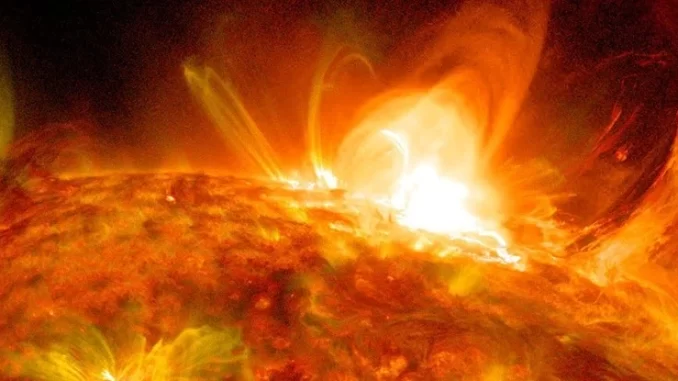
NASA’s Institute for Advanced Concepts is well-known for helping outlandish thoughts withinside the astronomy and area exploration fields. Since being re-set up in 2011, the institute has supported a extensive sort of initiatives as a part of its 3-segment program.
However, to this point, best 3 initiatives have long past directly to acquire Phase III investment. And one of these simply launched a white paper describing a challenge to get a telescope that would efficiently see biosignatures on close by exoplanets with the aid of using utilising the gravitational lens of our personal Sun.
That Phase III difference comes with US$2 million in investment, which withinside the case went to JPL, whose scientist, Slava Turyshev, become the most important investigator at the project’s first phases.
He teamed up with The Aerospace company for this brand new white paper, which describes a challenge idea in extra element and defines what technology exist already and what wishes in addition development.
However, there are numerous hanging capabilities of this challenge design, one in all that’s touched on in element over at Centauri Dreams.
Instead of launching a massive craft that might take a long term to journey anywhere, the proposed challenge could release numerous small cube-sats after which self-gather at the 25-yr adventure out to the sun gravitational lens (SGL) factor.
That “factor” is certainly a directly line among something supermegacelebrity the exoplanet is round and someplace among 550-one thousand AU on the opposite facet of the Sun. That is a extremely good distance, a lot in addition than the measly 156 AU that Voyager 1 has to this point taken forty four years to traverse.
So how should a spacecraft get to 3 instances the space even as taking nearly 1/2 of the time? Simple – it’s going to dive (nearly) into the Sun.
Using a gravitational improve from the Sun is a attempted and genuine approach. The quickest human-made item ever, the Parker Solar Probe, used simply this sort of technique.
However, being boosted to twenty-five AU a yr, the anticipated velocity at which this challenge could must journey is not easy. And it might be even extra hard for a fleet of ships instead of only a unmarried one.
The first trouble could be material – sun sails, that are the challenge’s desired approach of propulsion, do not achieve this nicely whilst subjected to the depth of the Sun that might be required for a gravitational slingshot.
In addition, the electronics at the machine could must be a lot extra radiation hardened than presently present tech. However, each of those recognized issues have capacity answers below lively studies.
Another reputedly apparent trouble could be a way to coordinate a passage of a couple of satellites via this form of gut-wrenching gravitational maneuver and nonetheless permit them to coordinate becoming a member of as much as efficiently shape a completely useful spacecraft withinside the end.
But in line with the paper’s authors, there can be extra than sufficient time at the 25-yr adventure out to the observational factor to actively rejoin the unmarried Cubesats right into a cohesive complete.
What should end result from that cohesive complete is a higher photo of an exoplanet that humanity is probably to get quick of a completely-fledged interstellar challenge.
Which exoplanet will be the pleasant candidate could be a subject of warm debate if the challenge actions forward, as extra than 50 to this point were located withinside the liveable zones in their stars. But this is absolutely no assure as yet.
The challenge hasn’t acquired any investment nor any indication that it’s going to achieve this withinside the close to future. And lots of technology could nonetheless must be advanced earlier than this sort of challenge could also be feasible.
But this is exactly how such missions constantly start, and this one has extra capacity effect than most. With luck, in some unspecified time in the future withinside the following couple of decades, we might acquire as crisp of an photo of a probably liveable exoplanet as we’re probably to acquire withinside the even medium future.
The group at the back of this studies merits reward for laying the foundation for such an concept withinside the first place.

Leave a Reply